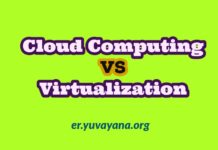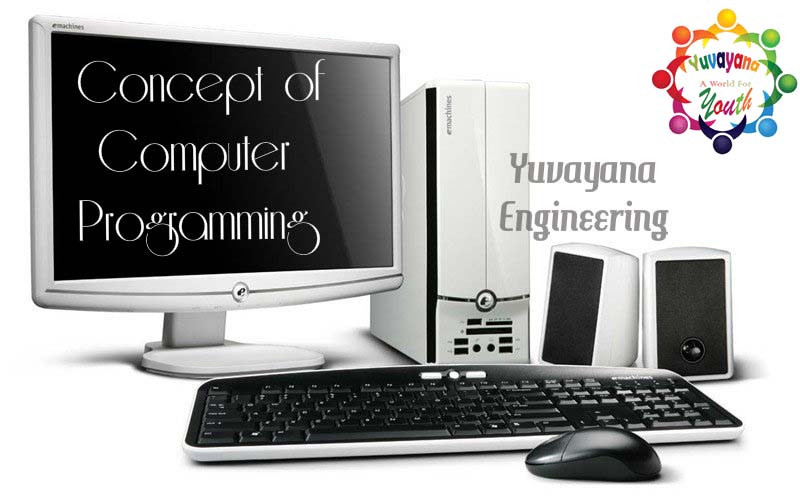In this article you will learn about cloud computing, categories, types, advantages and disadvantages of cloud computing including private, public and hybrid cloud. These days storing the data is becoming more tricky. We have an abundance of data that needs to be stored somewhere. Do we think that our computers and PC are sufficient for storing large chunks of data? Then what do you think? What should be the solution? For the last 7-8 years dropbox has worked well. But the cloud is better than dropbox. In this blog, we will discuss the Introduction to cloud computing in detail. Firstly, we will know the meaning of cloud computing.


“Cloud computing is the technique of on-demand liberation of IT resources above the Internet with pay-as-you-go pricing”
In the cloud, we can harness technology services as a substitute for buying, owning, and maintaining physical data centers and servers, such as computing power, databases and storage on an as-required basis from Amazon Web Services which is one of the best cloud providers.
Categories of Cloud Computing
IaaS: It stands for Infrastructure as a Service. It is a form of cloud computing that provides virtualized computing resources over the internet. It is the basic layer of cloud computing. Here you can outsource different kinds of IT infrastructures like networking, processing, servers, and other resources. You can pay per service in this model.
PaaS stands for Platform as a Service. it is a kind of cloud computing model in which a 3rd party provider delivers software and hardware tools. These are such tools that are required for the hardware development of users over the internet. A PaaS provider hosts the software and hardware on its infrastructure.
Also check: Classification of programming languages
SaaS: It stands for Software as a Service. it is a software distribution model in which a 3rd party provider hosts applications and makes them available to customers above the internet. Mainly in the SaaS model, the software is provided by cloud providers via the use of the internet. Here applications are uploaded online and you can download them anytime if you are having internet facility. You also don’t need to install the software.
Types of the cloud
Public cloud
The public cloud usually acts as a SaaS service provided to the user. It is considered a cost-effective option for the users. The expenses are fulfilled by service providers only.
Advantages of public cloud
- It has high reliability
- It has zero maintenance costs.
- It is high demand.
- It is cost-friendly
Disadvantages of public cloud
- Data is not secure.
- It lacks SLA specifications.
Also check: what is system?
Private cloud
The private cloud has good in terms of security. It is basically deployed by different organizations. This can be either outsourced or can be built on-premises.
Advantages of private cloud
- To building and manage data
- It is more customizable
- It has high scalability
- It is more secure
Hybrid cloud:
A hybrid cloud is the grouping of a private and public cloud. It is able to provide more elasticity to businesses while having control over precarious operations and assets.
Advantages of hybrid cloud
- It is more flexible.
- It is cost-effective.
- It has great scalability.
Advantages of cloud computing
Features |
Advantages Description |
| Cost-Effective | It basically doesn’t require extra hardware. You also don’t need to hire anyone to maintain it. All buying is done by a cloud service provider. |
| High Speed | It allows you to make use of service quickly in few seconds without wasting too much time. |
| Reliability | You are always updated with new updates. |
| Automatic Software Integration | Software integration is done automatically. You don’t need extra efforts in customization. You just need to add up the things based on your preferences. |
Strategic edge |
It offers you to access the latest and trendy applications at any time. |
| Backup | If data is in the cloud, it is safe you can easily recover it. |
| Unlimited storage | It provides unlimited storage capacity |
| Mobility | It can be accessed anywhere. You only need an internet connection |
| Pay-per-use | You don’t need to spend a huge amount of money. Just pay for the services that you opt. |
Disadvantages of Cloud Computing
Features |
Disadvantages description |
| Variable Performance | Performance always changes. |
| Security threat | There are a lot many security issues. |
| Poor connection | There may some internet problems |
Also check: keywords in c
Conclusion:
In this article, we have discussed the Introduction to cloud computing. If you are having any doubt, feel free to ask me in the comment box.











